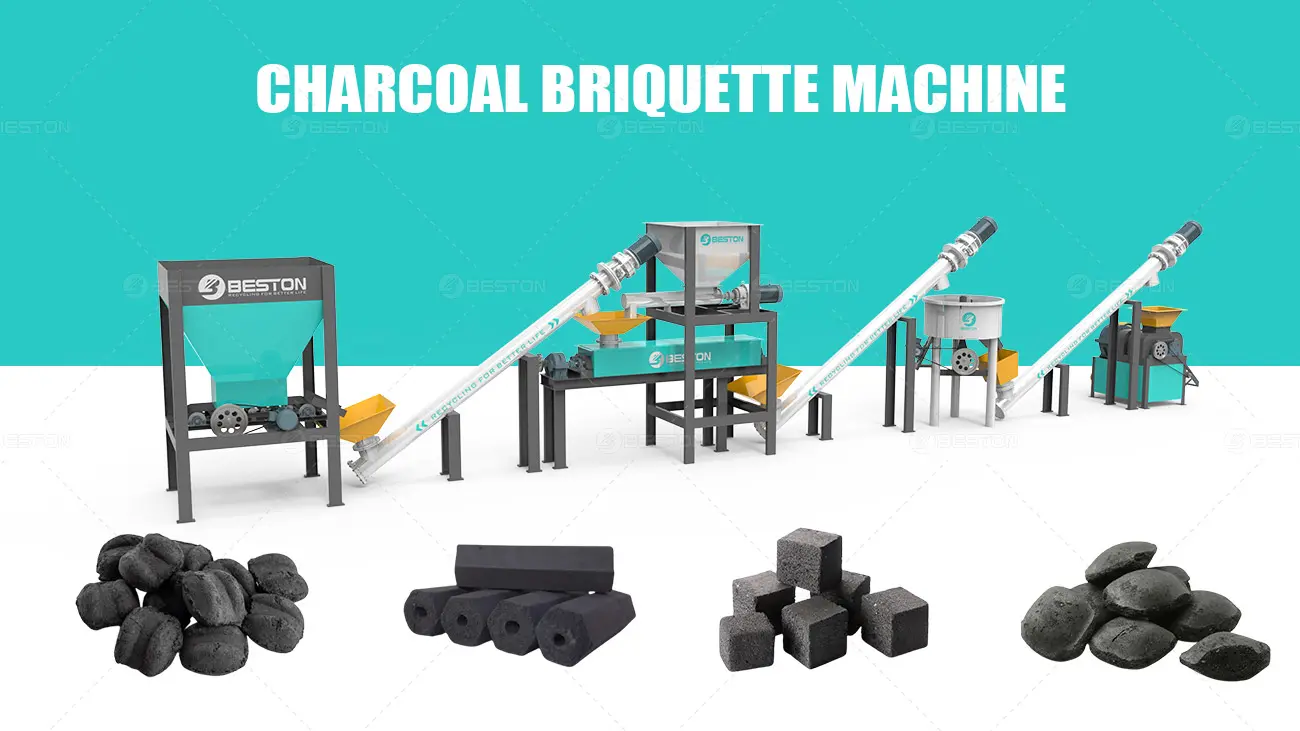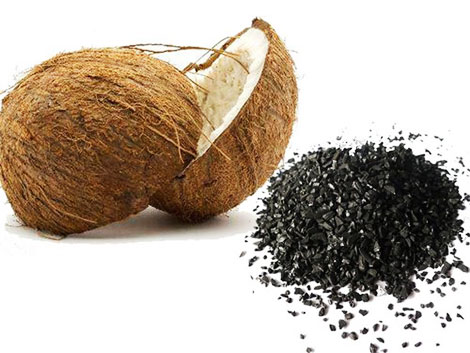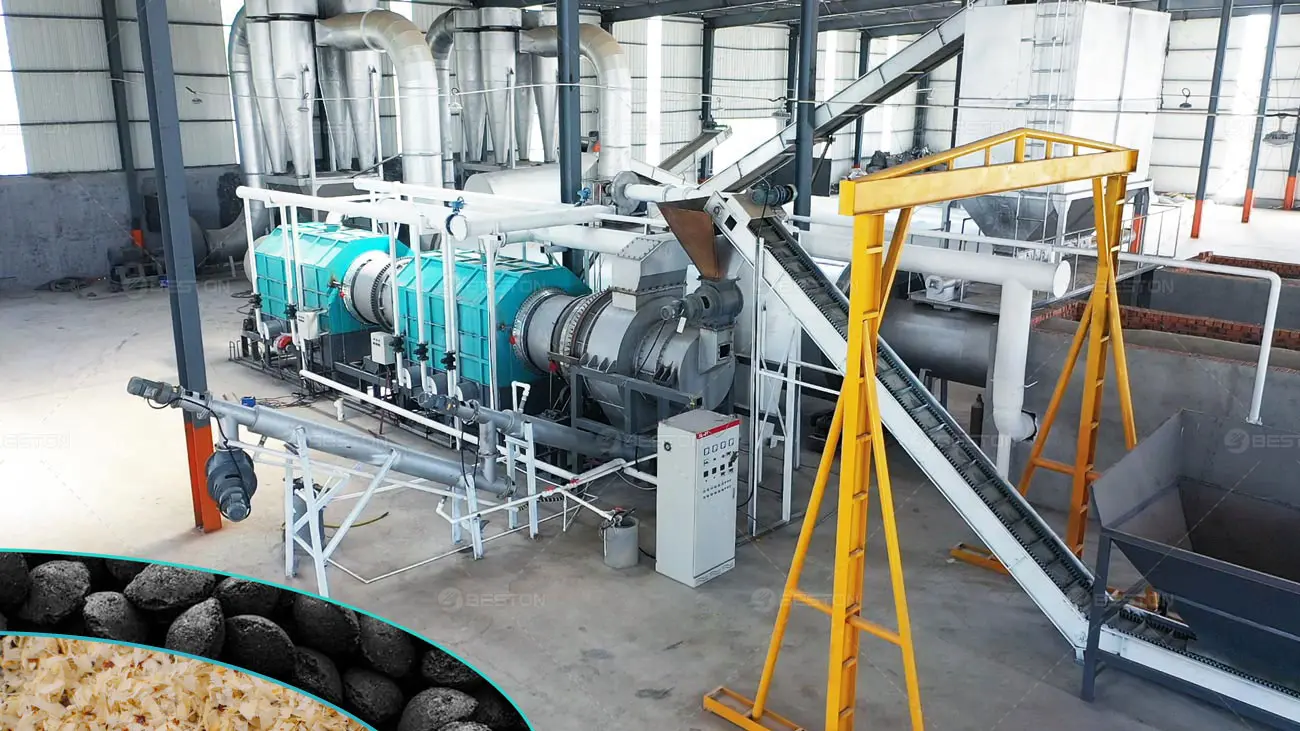Charcoal briquetting has become an increasingly popular method of turning biomass into valuable, eco-friendly fuel. Whether using coconut shells, sawdust, or specialized materials for shisha charcoal, the process offers a sustainable way to repurpose waste materials while contributing to environmental conservation. Let’s dive into the different types of charcoal briquettes and how they are made.

Coconut Shell: A Renewable Resource for Briquettes
Coconut shells, once considered agricultural waste, are now seen as a valuable resource in the charcoal-making world. These shells have excellent properties for briquette production, such as high carbon content and density. The process involves converting these shells into charcoal, then compressing the material into high-quality, long-burning briquettes. Coconut shell briquettes are ideal for both cooking and heating, as they burn longer and produce less smoke than traditional wood charcoal.
The coconut shell briquette machine supports both sustainability and economic growth in tropical regions where coconuts are abundant. It offers a way to minimize agricultural waste while creating a marketable product that reduces deforestation by decreasing the reliance on wood-based charcoal.

Sawdust: Efficient, Low-Cost Charcoal Production
Sawdust, a byproduct of wood processing, can also be transformed into valuable charcoal briquettes. By converting this material into charcoal, we not only reduce waste but also create an eco-friendly fuel alternative. Sawdust briquettes are particularly popular due to their uniform shape, easy handling, and efficient burning properties.
The process of sawdust briquette charcoal making machine is simple yet efficient, with the result being high-quality charcoal that burns evenly and with minimal ash. This type of briquette is especially useful for industries and households alike, offering a sustainable energy source from what would otherwise be discarded waste.

Shisha Charcoal: Perfecting the Art of Smoking Charcoal
Shisha, or hookah, is a global pastime, and the quality of the charcoal used plays a significant role in the overall experience. Shisha charcoal briquettes are crafted with precision, typically from natural materials like coconut shells or wood, ensuring that the smoke is clean, consistent, and long-lasting. These briquettes are carefully pressed into the ideal size and shape for shisha users, ensuring a slow, steady burn that enhances the flavor of the tobacco without overpowering it with unwanted odors or smoke. https://bestonpyrolysisplant.com/shisha-charcoal-machine/
The meticulous process of making shisha charcoal has become a specialized niche in the briquette industry. Many manufacturers pride themselves on creating premium products that cater to the growing shisha market, especially as more consumers seek natural, eco-friendly options for their smoking experience.
The Environmental and Economic Benefits of Briquetting
One of the most appealing aspects of charcoal briquetting is its contribution to sustainability. By repurposing materials like coconut shells and sawdust, manufacturers help reduce deforestation and carbon emissions while promoting renewable energy sources. Additionally, this industry creates job opportunities, especially in regions rich in these natural resources. https://bestonpyrolysisplant.com/charcoal-briquette-machine/
Whether you’re looking at the eco-friendly potential of coconut shell briquettes, the cost-efficiency of sawdust charcoal, or the specialized niche of shisha charcoal, each type offers unique benefits to both consumers and the environment. This growing trend in sustainable energy production is making a positive impact worldwide.
Conclusion
The world of charcoal briquetting offers endless possibilities for transforming natural waste into valuable products. From coconut shell briquettes to sawdust charcoal and shisha briquettes, each variety serves a distinct purpose, meeting the needs of both industry and individual consumers. As the demand for sustainable energy solutions continues to grow, these products represent an important step toward reducing environmental impact and promoting the circular economy.